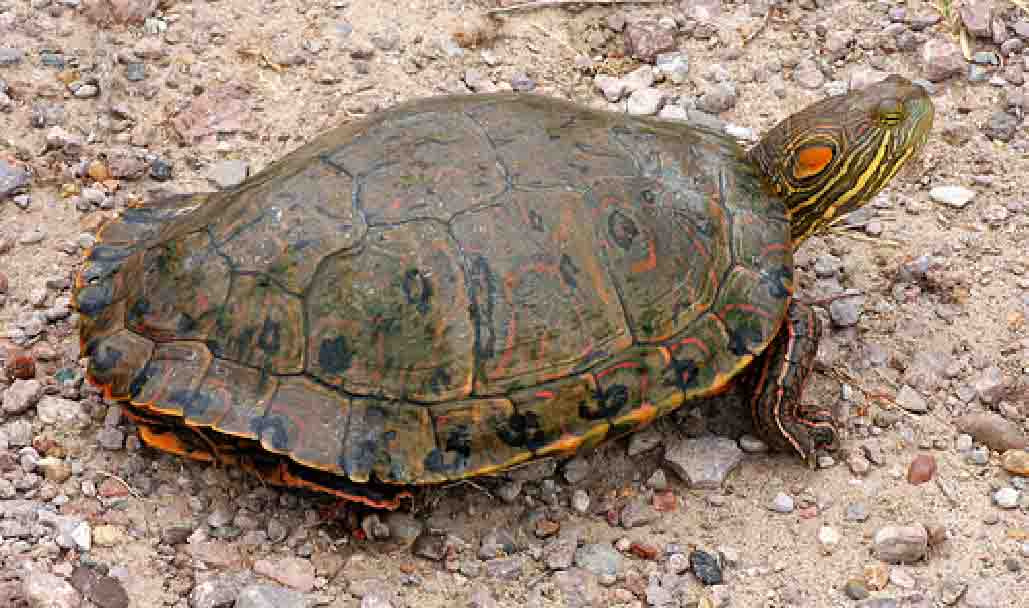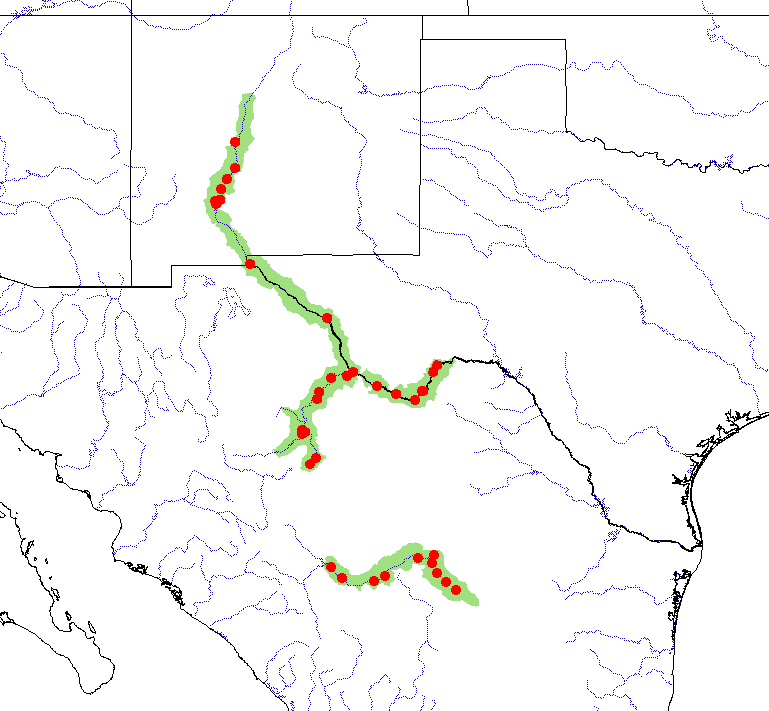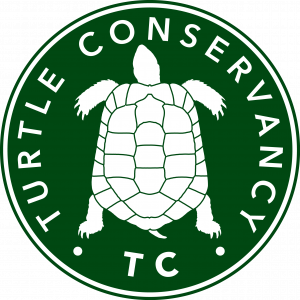Trachemys gaigeae, 032
Trachemys gaigeae (Hartweg 1939) –
Big Bend Slider, Mexican Plateau Slider,
Jicotea de la Meseta Mexicana
James N. Stuart1 and Joseph P. Ward2
1New Mexico Department of Game & Fish, Conservation Services Division,
P.O. Box 25112, Santa Fe, New Mexico 87504 USA [[email protected]];
26899 South Highway A1A, Melbourne Beach, Florida 32951 USA [[email protected]]
Summary. – The Big Bend slider, Trachemys gaigeae (Family Emydidae), is a medium-sized freshwater turtle (carapace length to 308 mm) that is limited to riverine areas of the desert southwestern United States and northern Mexico. Two allopatric subspecies are currently recognized, T. g. gaigeae and T. g. hartwegi, which might represent distinct species. Degradation and fragmentation of riverine habitat is likely the most significant threat to T. gaigeae in both the United States and Mexico. Overcollecting for the pet trade or as food and hybridization with introduced Trachemys scripta are also of concern, although more information is needed. Commercial collection is prohibited in the United States but otherwise this slider receives little protection, except where it occurs on public lands. The species uses reservoirs and artificial ponds in New Mexico, suggesting some adaptability to human-modified environments. The status and ecology of this species in the United States has been little studied until recently and even less is known about populations in Mexico.
Distribution. – Mexico, USA. Occurs in the Rio Grande (= Río Bravo del Norte) drainage from south-central New Mexico downstream to western Texas and northwestern Coahuila, the Río Conchos in Mexico from southern Chihuahua downstream to the confluence with the Rio Grande, and the Río Nazas closed basin of Durango and Coahuila, Mexico.
Synonymy. – Pseudemys scripta gaigeae Hartweg 1939, Pseudemys gaigeae, Chrysemys scripta gaigeae, Chrysemys gaigeae, Chrysemys (Trachemys) scripta gaigeae, Trachemys nebulosa gaigeae, Trachemys scripta gaigeae, Trachemys gaigeae.
Subspecies. – Two currently recognized: Trachemys gaigeae gaigeae (Big Bend Slider, Jicotea de Gaige) and Trachemys gaigeae hartwegi (Nazas Slider, Jicotea del Nazas) (synonymy: Pseudemys scripta hartwegi Legler 1990, Chrysemys scripta hartwegi, Trachemys scripta hartwegi, Trachemys nebulosa hartwegi, Trachemys ornata hartwegi, Trachemys hartwegi).
Status. – IUCN 2009 Red List: Vulnerable (VU A1c,D2) (assessed 1996, needs updating); CITES: Not Listed; US ESA: Not Listed; New Mexico: Species of Greatest Conservation Need.
Citation:
Stuart, J.N. and Ward, J.P. 2009. Trachemys gaigeae (Hartweg 1939) – Big Bend slider, Mexican Plateau slider, jicotea de la Meseta Mexicana. In: Rhodin, A.G.J., Pritchard, P.C.H., van Dijk, P.P., Saumure, R.A., Buhlmann, K.A., Iverson, J.B., and Mittermeier, R.A. (Eds.). Conservation Biology of Freshwater Turtles and Tortoises: A Compilation Project of the IUCN/SSC Tortoise and Freshwater Turtle Specialist Group. Chelonian Research Monographs No. 5, pp. 032.1-032.12, doi:10.3854/crm.5.032.gaigeae.v1.2009, //iucn-tftsg.org/cbftt/.
(Adobe Acrobat 6.0 or later required)

Trachemys gaigeae gaigeae, adult female, from Socorro County, New Mexico, USA.
Photo by J.N. Stuart.
Distribution:

Distribution of Trachemys gaigeae in the southwestern USA (New Mexico and Texas) and northeastern Mexico. Trachemys g. gaigeae is the disjunct northern distribution, T. g. hartwegi the disjunct southern range. Red points = museum and literature occurrence records based on Iverson (1992) plus more recent and authors’ data; green shading = projected distribution based on GIS-defined hydrologic unit compartments (HUCs) constructed around verified localities and then adding HUCs that connect known point localities in the same watershed or physiographic region, and similar habitats and elevations as verified HUCs (Buhlmann et al., in press), and adjusted based on authors’ data.








